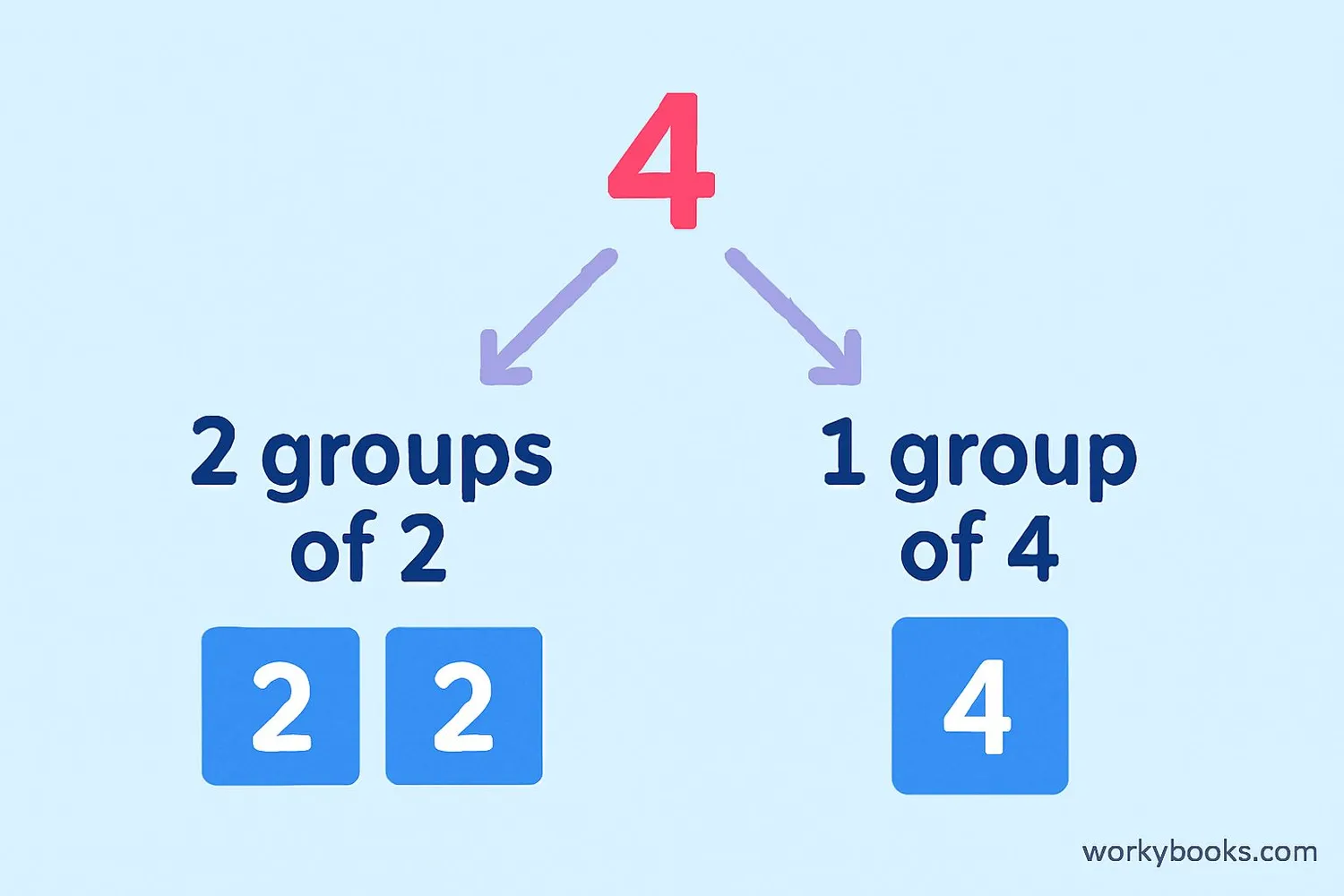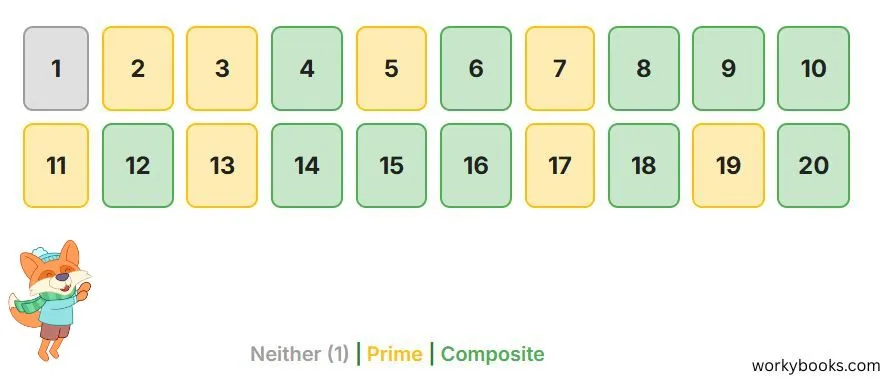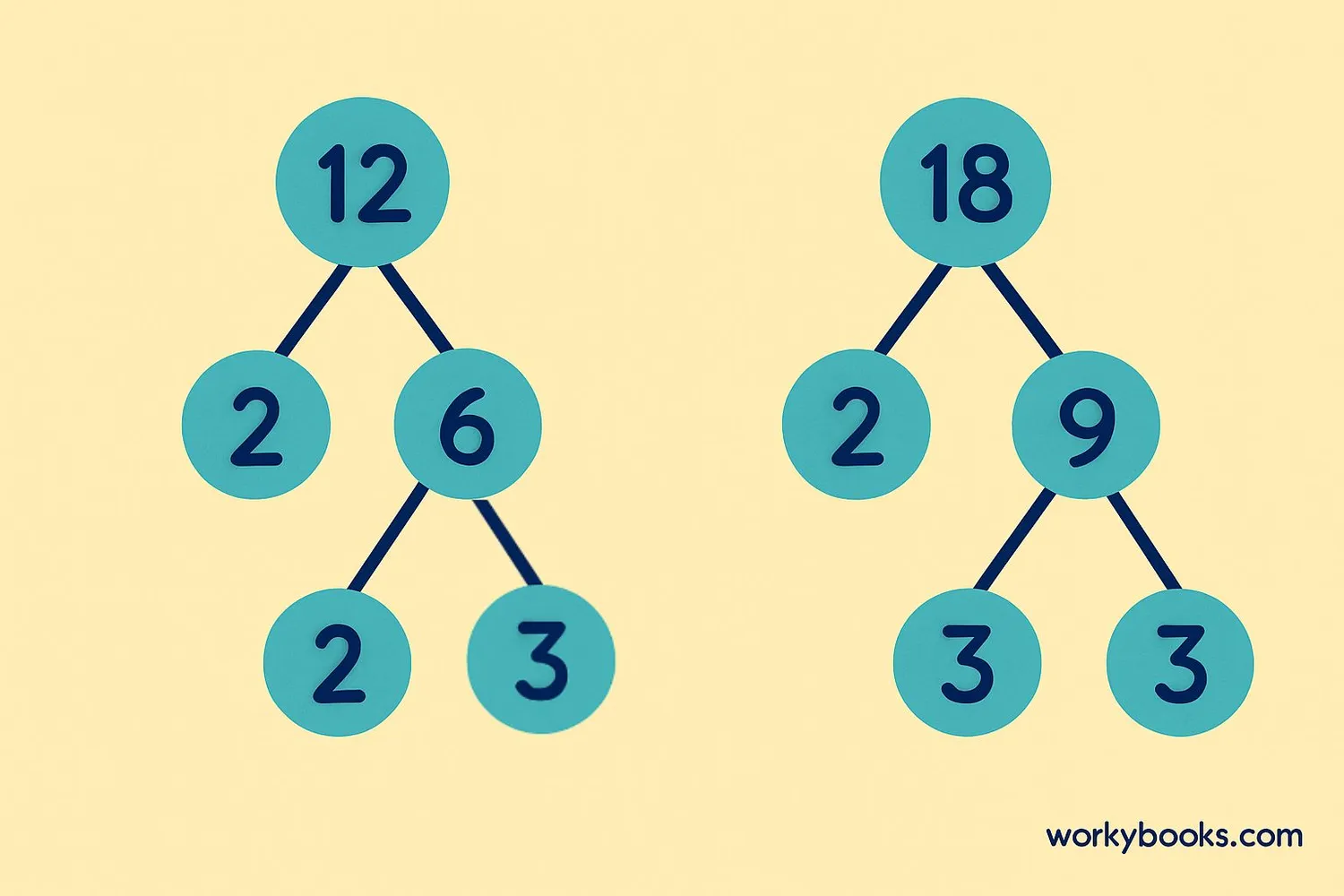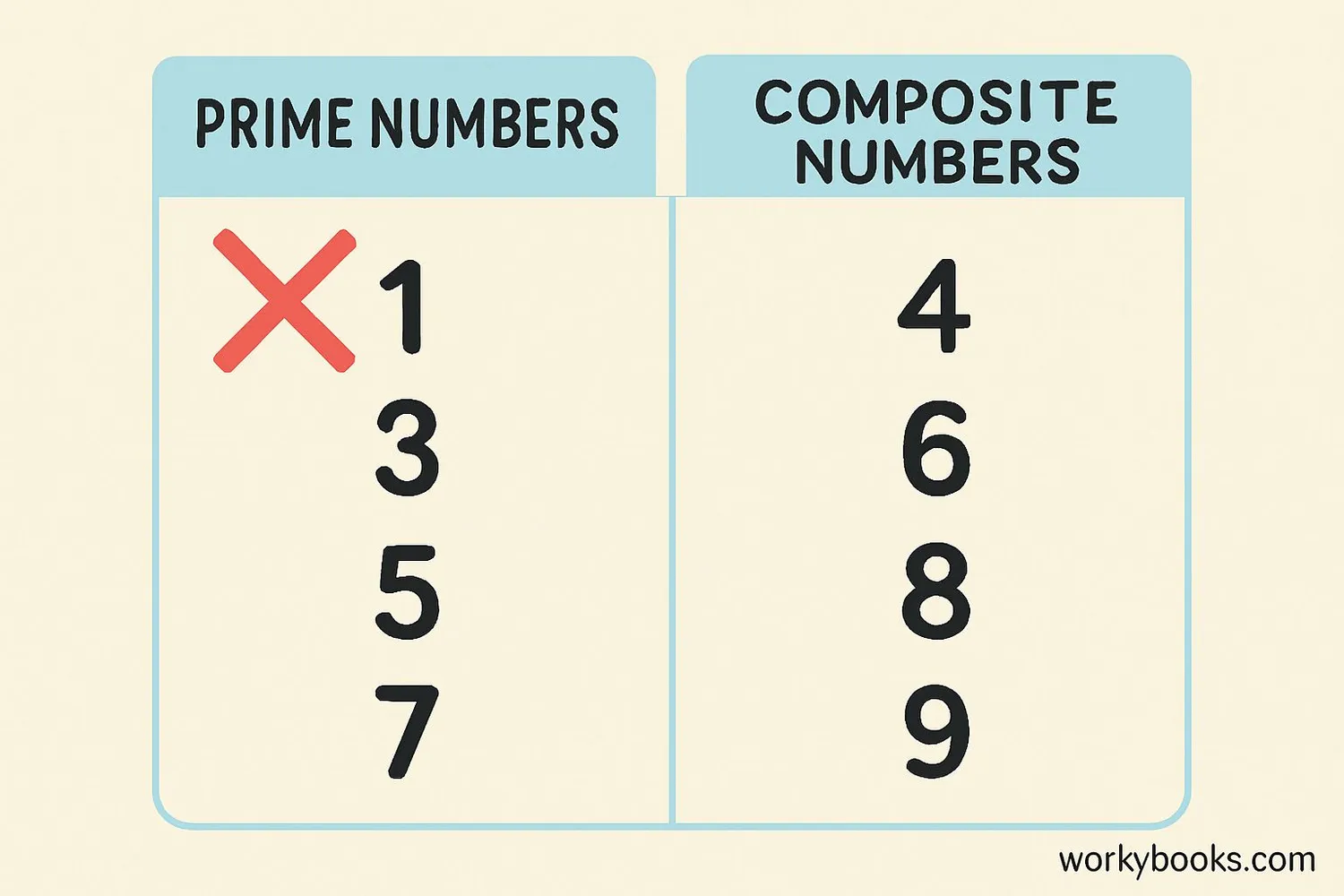Composite Numbers - Definition, Examples, Quiz, FAQ, Trivia
Learn about numbers with more than two factors through easy explanations and practice activities
What are Composite Numbers?

A composite number is a whole number that has more than two factors. Factors are numbers we multiply together to get another number. For example, the number 4 has three factors: 1, 2, and 4.
Why are they called composite? Think of them as being "composed" or made up of smaller numbers. Just like a building is made of many bricks, composite numbers are made by multiplying smaller numbers together.
The smallest composite number is 4. It has factors 1, 2, and 4. Every composite number can be broken down into smaller factors. For example, 6 can be broken down into 2 × 3.
Key Concept
Composite numbers have at least three factors: 1, themselves, and at least one other number.
Properties of Composite Numbers

Composite numbers have some special properties that make them interesting:
1. Always have more than two factors: Unlike prime numbers that have exactly two factors, composite numbers have three or more factors.
2. Can be even or odd: Composite numbers can be both even and odd. The smallest even composite number is 4. The smallest odd composite number is 9.
3. Can be divided evenly: Composite numbers can always be divided evenly by numbers other than 1 and themselves. For example, 15 can be divided by 3 and 5.
4. All even numbers greater than 2 are composite: This is because they can all be divided by 2. For example, 4, 6, 8, 10, etc.
Remember
The number 1 is neither prime nor composite because it has only one factor - itself.
Examples of Composite Numbers

Let's look at some examples of composite numbers and their factors:
4: Factors are 1, 2, 4 (3 factors)
6: Factors are 1, 2, 3, 6 (4 factors)
8: Factors are 1, 2, 4, 8 (4 factors)
9: Factors are 1, 3, 9 (3 factors)
10: Factors are 1, 2, 5, 10 (4 factors)
12: Factors are 1, 2, 3, 4, 6, 12 (6 factors)
Here are all the composite numbers between 1 and 30:
Pattern
As numbers get larger, they are more likely to be composite. After 1, all non-prime numbers are composite!
Prime vs Composite Numbers

It's important to understand the difference between prime and composite numbers:
Prime Numbers:
- Have exactly two factors: 1 and themselves
- Examples: 2, 3, 5, 7, 11, 13
- Cannot be divided evenly by any other numbers
- Have more than two factors
- Examples: 4, 6, 8, 9, 10, 12
- Can be divided evenly by numbers other than 1 and themselves
- Has only one factor: itself
- Is neither prime nor composite
Quick Check
If a number has exactly two factors, it's prime. If it has more than two, it's composite. If it has one factor, it's neither.
Composite Numbers Quiz
Test your knowledge with this 5-question quiz. Choose the correct answer for each question.
Frequently Asked Questions
Here are answers to common questions about composite numbers:
Number Trivia
Discover interesting facts about numbers:
Ancient Discoveries
The ancient Greek mathematician Euclid first studied prime and composite numbers around 300 BCE. His work formed the foundation of number theory.
Fundamental Theorem
Every composite number can be expressed as a unique product of prime numbers. This is called the Fundamental Theorem of Arithmetic.
Security Applications
Large composite numbers (over 600 digits) are used in modern computer security to encrypt sensitive information like credit card numbers.
Infinite Composites
There are infinitely many composite numbers! In fact, for any composite number, you can always find a larger one by multiplying it by 2.





